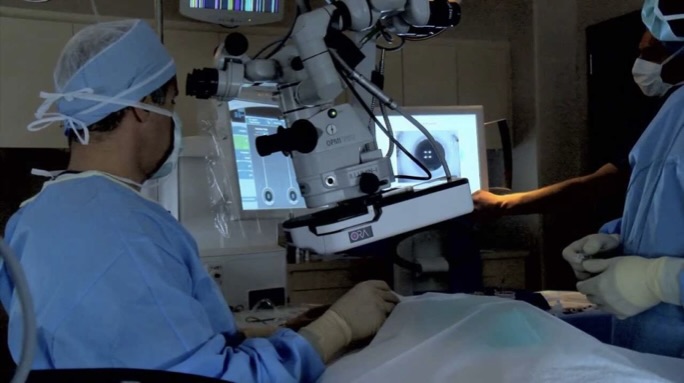
2024 Inductees

Anthony “Tony” Van Heugten
Chief Technology Officer
e-Vision Smart Optics, Inc.
61 U.S. Patents
Anthony “Tony” Van Heugten is the Chief Technology Officer of e-Vision Smart Optics, Inc., a leading electronic lens modulation company that designs and fabricates optics that control and shape light with no moving parts.
Mr. Van Heugten’s industry-disrupting innovations are in electronic liquid crystal lenses, ophthalmic diagnostic devices, eye surgery instruments, and next generation human vision correction; and include products from resistive bridges for practical electro-active contact lenses to dynamic focusing elements for augmented reality headsets to electro-optic phoropters for performing vision examinations. His research has led to the development of liquid crystal tunable lens technology for intra-ocular lenses, remote controlled contact lenses and eyewear, and virtual and augmented reality devices. Moreover, Mr. Van Heugten’s work on liquid-crystal-based lenses is being commercialized in Japan by Mitsui Chemicals as the TouchFocusTM instantaneously adjustable eyewear for near- and far-sighted vision.
Prior to joining e-Vision, Mr. Van Heugten co-founded and served as the Chief Technology Officer of WaveTec Vision Systems, Inc. where he invented a miniature wavefront sensor coupled to a surgical microscope that measured the optical power of the eye in real time during cataract eye surgery, resulting in better surgical outcomes. WaveTec was sold to Alcon Laboratories in 2014. Since then, over three million surgeries have been performed with these sensors.
Over the course of his career, Mr. Van Heugten has commercialized or licensed a number of his innovations including products for interventional cardiology (MedClose), vascular access (Johnson & Johnson), and laser-vision-correction lasers (Summit Technology). He has also led projects sponsored by NASA, the National Institutes of Health (systems to screen children for vision disorders), the US Air Force (lenses correcting higher order aberrations in the pursuit of “super vision”), and the US Army (night vision systems).
Mr. Van Heugten is also president of the non-profit Institute for Adaptive Optics in Human Vision, where he is constantly seeking new ways to improve the quality of life of people in the way that they see.
A MENTION ABOUT INVENTION – 3 Questions for the Inventor
Q1. Of your patents/inventions, which one is your favorite and why?
Of the many medical devices I have developed, my favorite is a surgical microscope that provides the surgeon with real-time optical measurements of the eye to guide the operation. This is because it made a significant contribution to the state of the art in cataract and refractive procedures. I believe our eyesight is the most important sense we have and has the greatest impact on our quality of life. This device has helped improve surgical outcomes for over three million eyes. It has also inspired other inventors to develop additional instruments that give the surgeon even more live diagnostic information on the operating table during procedures.
Q2. What inspired you to become an inventor/innovator?
I did not set out to become an inventor. My employer, Critikon/Johnson & Johnson, made me one. During the hiring process for a position working with automation, I was asked, “What is your ultimate career goal?” Rather than give a typical answer such as, “Become company president,” or “Become wealthy,” I said that I wanted to invent something useful that would contribute to society. (After I said that, I asked myself, “What were you thinking?”)
A little while later, after developing several new manufacturing automation processes for the company, I found myself at R&D headquarters in Tampa, Florida, with the assignment to develop new things. Although I was terrified that I would fail and be fired, that was the beginning of my successful career in inventing new products.
Q3. What is your process when developing new inventions/innovations?
I start by gathering as much information as possible through first-hand observation of what’s currently being done, reading extensively on the subject, and, most importantly, listening to others about what they’d like to see improved. Once I’ve absorbed everything I can about the current state of the art and its limitations, I intentionally shift my focus and engage in unrelated activities like biking, hiking, or camping. Inevitably, after some time, I’ll have an “aha!” moment that provides the solution. My wife, Sue, has grown used to me getting out of bed at 2 AM to drive to my lab and test a new idea.

